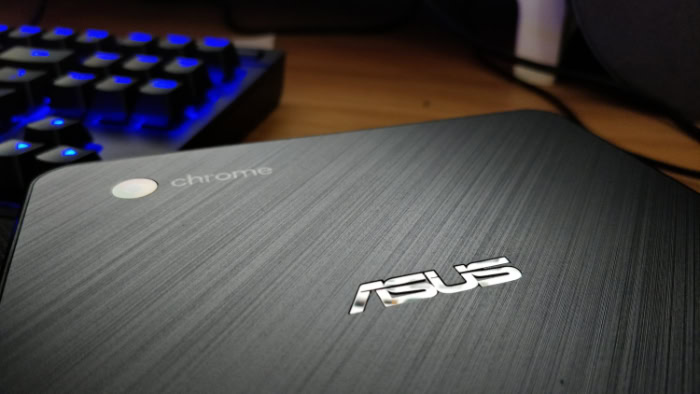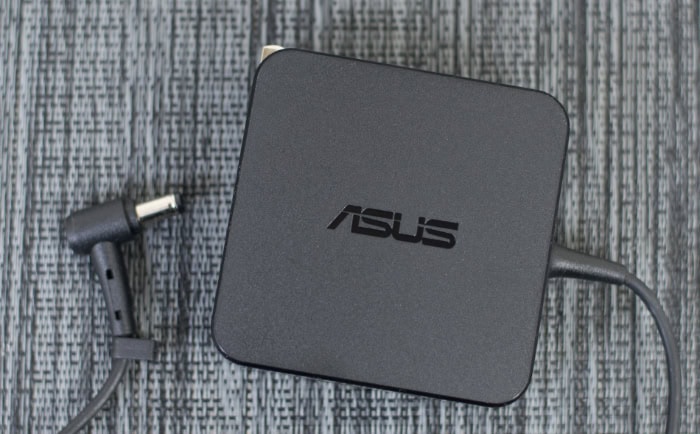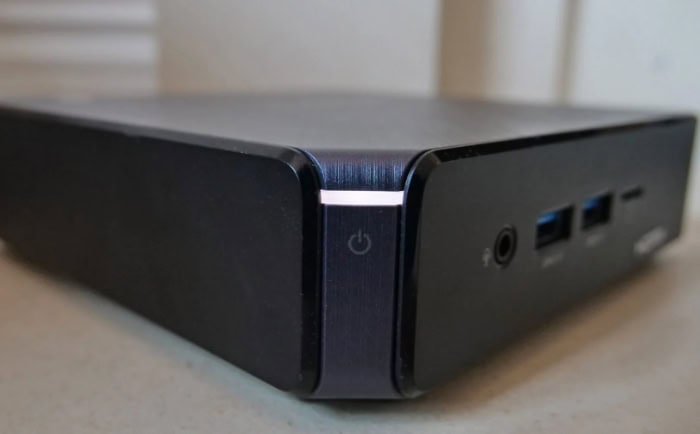What Is a Chromebox? A Look at Google's Mini PC

The search for a desktop computer often leads to familiar, bulky towers, but a Chromebox presents a streamlined alternative. This compact machine runs Google’s web-first ChromeOS, connecting to any monitor and keyboard to deliver a fast and secure computing experience.
But how does this mini desktop compare to a portable Chromebook or a versatile Windows mini PC? Making the right choice requires looking at its hardware configurations, app compatibility, and management options for different settings.
What a Chromebox Is
A Chromebox functions as the central hub of a desktop setup, housed in a small chassis that can be discreetly placed on a desk or mounted behind a monitor. It runs ChromeOS, an operating system that prioritizes cloud-based storage and web applications over traditional installed software.
This minimalist approach results in a fast boot-up process, automatic background updates, and a secure computing environment. Users simply connect it to a monitor, keyboard, and mouse to get started.
Chromebox vs. Chromebook and Windows Mini PC
While sharing a similar name and operating system with Chromebooks, a Chromebox serves a different purpose. Its distinction from a Windows mini PC is even more pronounced, primarily due to its software ecosystem.
| Feature | Chromebox | Chromebook | Windows Mini PC |
| Form Factor | Stationary mini desktop | Portable laptop | Stationary mini desktop |
| Integrated Parts | None (requires external peripherals) | Built-in display, keyboard, trackpad, battery | None (requires external peripherals) |
| Operating System | ChromeOS | ChromeOS | Windows |
| Primary App Model | Web apps and Android apps | Web apps and Android apps | Native Windows desktop applications |
Who Benefits from a Chromebox?
The Chromebox is best suited for users and organizations that operate primarily within a web-based workflow. It provides a straightforward and efficient solution for those who rely on browsers for email, document editing, media streaming, and general productivity.
Businesses and educational institutions often favor it for its low maintenance requirements and centralized management capabilities, making it an excellent choice for shared workstations, digital signage, or conference room setups where reliability and simplicity are paramount.
Hardware and Setup

Getting a Chromebox running is a simple process, but its minimalist design means you must supply the essential peripherals. The internal hardware you choose will directly influence its performance, so matching the components to your intended tasks is important for a smooth and responsive experience.
Required Peripherals and Initial Setup
Because a Chromebox is just the central processing unit in a compact box, you will need to connect an external monitor, a keyboard, and a mouse to use it. The setup process is straightforward: connect your peripherals, plug the power adapter into an outlet, and turn the device on.
Its small footprint helps create a clean and uncluttered desk space. Many models also support VESA mounting, which allows you to attach the Chromebox directly to the back of a compatible monitor for an all-in-one feel.
Connectivity and Display Options
Chromeboxes are equipped with a variety of ports to connect displays and accessories. Most units include multiple USB-A ports for legacy devices, one or more USB-C ports, and at least one HDMI port.
The USB-C ports are particularly useful, as they often support power delivery, data transfer, and video output through a single cable. A significant advantage of a Chromebox is its robust support for multi-monitor workstations.
While basic models can easily power two displays, higher-end configurations can drive up to three 4K monitors, making them a capable choice for advanced productivity setups.
Performance Specifications to Consider
The performance of a Chromebox depends on its processor (CPU), memory (RAM), and internal storage.
- CPU: Processor options typically range from Intel Celeron to Intel Core i3, i5, and i7. A Celeron processor is adequate for basic web browsing, email, and streaming. For more intensive multitasking, running numerous browser tabs, or using demanding Android applications, upgrading to a Core i3 or i5 processor provides a noticeable performance boost.
- RAM: ChromeOS relies heavily on RAM for managing open tabs and applications. While 4 GB of RAM is sufficient for light use, 8 GB is the recommended amount for most people to ensure fluid multitasking without slowdowns. Power users who frequently work with dozens of tabs or complex web apps may benefit from 16 GB.
- Storage: Since ChromeOS is designed to work with cloud storage services like Google Drive, a large amount of local storage is less critical than on a traditional desktop. The internal Solid State Drive (SSD) primarily holds the operating system, applications, and a small number of offline files. For most users, 64 GB or 128 GB of storage is ample.
Software, Apps, and Management
The software experience on a Chromebox is defined by the ChromeOS operating system, which provides access to a wide range of applications and powerful administrative tools. Its app ecosystem is built around web technologies, but it also integrates Android apps to expand its functionality for both individual users and managed organizations.
Applications and Capabilities
ChromeOS operates on a foundation of web-based applications. Progressive Web Apps (PWAs) allow websites to function like native applications, offering offline access and system notifications.
The Google Play Store is also available on Chromeboxes, providing access to millions of Android apps. This combination covers most common productivity and media consumption needs, including document editing, email, video streaming, and social media.
While many Android apps work well, some designed for touch-screen phones may not offer an optimal experience with a mouse and keyboard.
Device Enrollment and Control
For businesses and educational institutions, ChromeOS offers robust management capabilities through the Google Admin console. Administrators can use zero-touch enrollment to automatically configure and deploy new Chromeboxes across an organization without manual setup.
From the web-based console, IT teams can enforce policies, manage user access, remotely install applications, and control update schedules for an entire fleet of devices. This centralized oversight simplifies administration, enhances security, and significantly reduces the maintenance burden associated with managing traditional desktop computers.
Integrated Meeting Solutions
Chromeboxes are frequently packaged as dedicated video conferencing hardware for meeting rooms. Marketed as Google Meet hardware kits, these bundles typically include a Chromebox, a high-definition conference camera, a combination speaker and microphone unit, and a remote control.
The Chromebox serves as the processing hub for the system, providing a reliable and easy-to-use solution for joining video calls with a single tap. These pre-configured kits offer a turnkey approach for outfitting collaboration spaces, eliminating the complexity of setting up and managing separate components.
Use Cases Across Settings

The versatility of a Chromebox allows it to serve effectively in a variety of environments, from a simple home desk to large-scale enterprise deployments. Its core attributes of simplicity, security, and centralized management make it a strong candidate for any scenario where web-based access is the primary need.
For Home and Office Use
At home, a Chromebox provides a reliable and clutter-free desktop computer for everyday activities. It excels at web browsing, streaming media, managing email, and working on documents.
Its fast startup and silent operation make it an excellent choice for a family computer or a dedicated home office workstation. For professionals whose work is centered around web applications, it offers a focused and efficient environment without the complexities of a traditional operating system.
In Education
Chromeboxes are a popular choice in educational settings, particularly for computer labs, libraries, and shared classroom stations. The easy sign-in process allows students to quickly access their personal accounts and cloud-stored work on any device.
When they sign out, their information is securely removed. For IT administrators, the Google Admin console provides complete control over the entire fleet, enabling them to deploy applications, configure security settings, and manage updates remotely, which greatly reduces maintenance time and costs.
In Business Environments
Businesses leverage Chromeboxes for a range of specialized applications where stability and remote management are critical. They are frequently used to power digital signage in lobbies and retail spaces, where they can reliably display content around the clock.
As customer-facing kiosks, they can be locked down to a single application for tasks like check-ins or information lookup. Chromeboxes also form the backbone of many conference room systems, providing the processing power for seamless video meetings in pre-packaged Google Meet hardware kits.
Weighing the Benefits and Limitations
To determine if a Chromebox is a suitable desktop replacement, it is important to weigh its distinct advantages against its inherent software and performance limitations. Its design prioritizes simplicity and security, which creates clear benefits for some users but presents significant trade-offs for others.
Core Strengths of ChromeOS
A Chromebox offers several compelling advantages rooted in its operating system. Its speed is immediately noticeable, with devices booting up in seconds and applications launching quickly.
Maintenance is minimal, as ChromeOS manages security patches and feature updates automatically in the background without interrupting workflow. The security-first architecture employs sandboxing, which isolates every app and web page in its own process to contain potential threats.
This combination of speed, low maintenance, and built-in security reduces the typical support overhead required for traditional desktops.
Understanding the Constraints
The focused nature of a Chromebox also creates clear limitations. It is not designed for resource-intensive local processing.
As a result, it is unsuitable for demanding tasks like professional video editing, running complex engineering software, or playing graphically intensive PC games. The app ecosystem, while versatile for web-based work and general productivity, is dependent on web standards and the Google Play Store.
If your workflow relies on specialized desktop applications that do not have a capable web-based or Android equivalent, a Chromebox will not be a practical choice.
Is a Chromebox the Right Fit?
A Chromebox is an excellent choice when your daily tasks are primarily web-based and you value a simple, secure, and low-maintenance computing environment. It is particularly well-suited for organizations that need to deploy and manage a large number of devices with minimal IT effort.
If you need a reliable station for powering a multi-monitor setup for productivity or a stable device for a kiosk or digital sign, a Chromebox excels. However, if your work requires the power and flexibility of native desktop applications, a traditional Windows or macOS computer would be a more appropriate solution.
Conclusion
A Chromebox presents a focused alternative to the traditional desktop computer, prioritizing simplicity, security, and a web-first experience through its ChromeOS platform. Its utility scales from a single, tidy home office setup to large, centrally managed fleets in educational labs and corporate environments.
The decision to adopt a Chromebox hinges on a careful assessment of your daily tasks and technical requirements. By matching hardware specifications to your workload, confirming that your essential applications are available as web or Android apps, and acknowledging its performance limits for specialized software, you can determine if this streamlined device aligns with your goals.
For users and organizations operating primarily in the cloud, the Chromebox offers a practical, low-maintenance, and effective computing solution.


